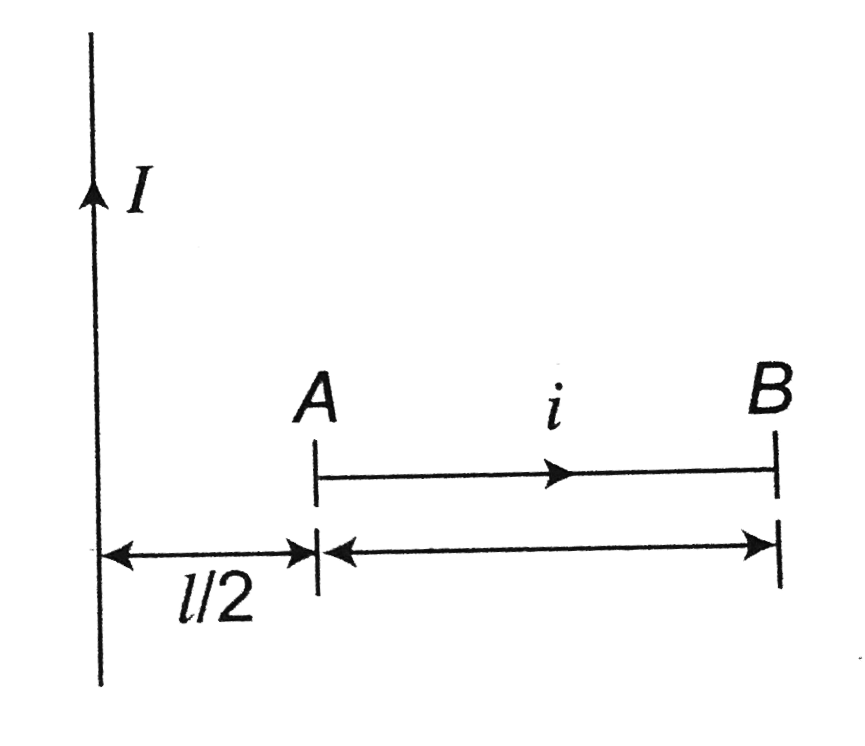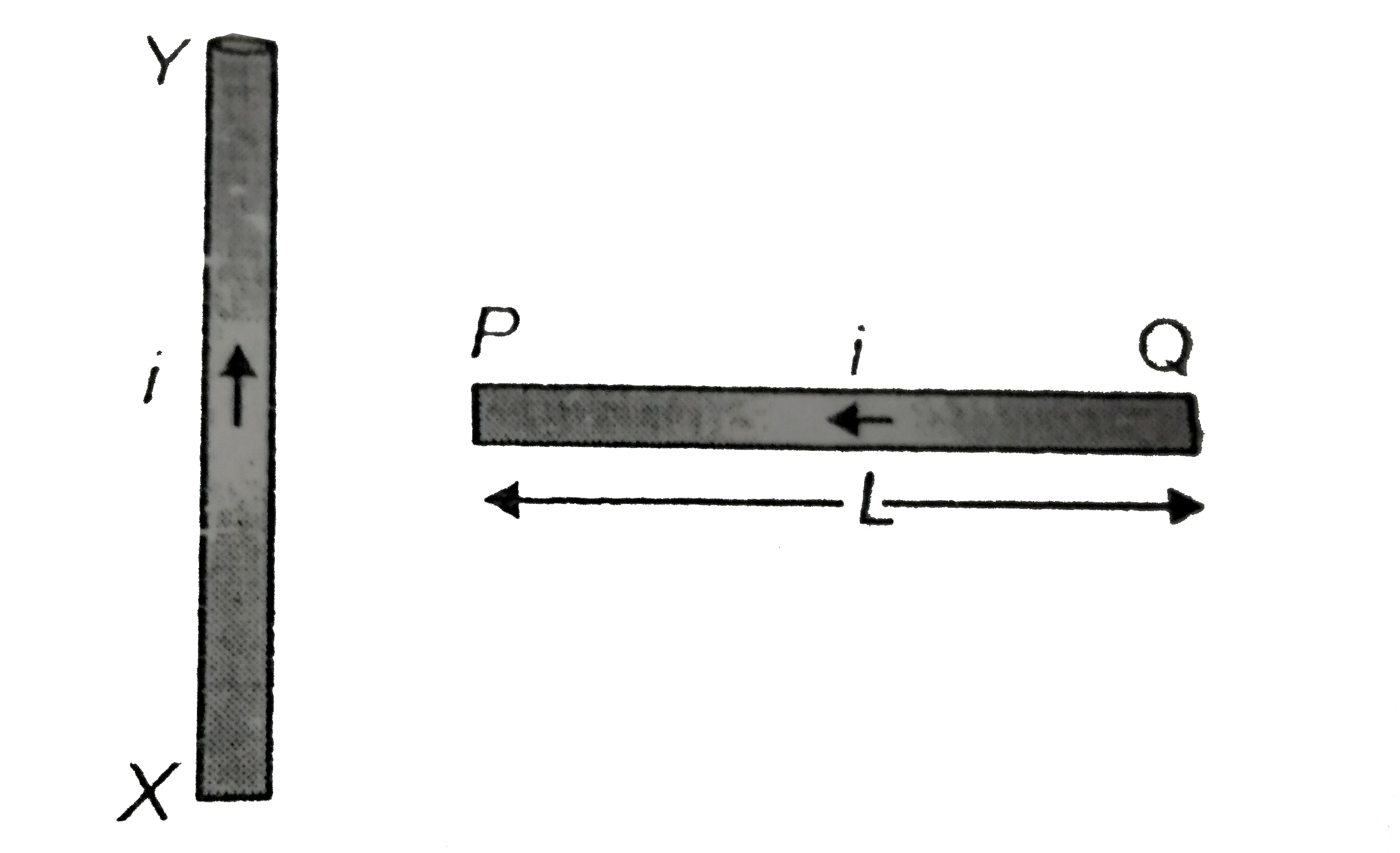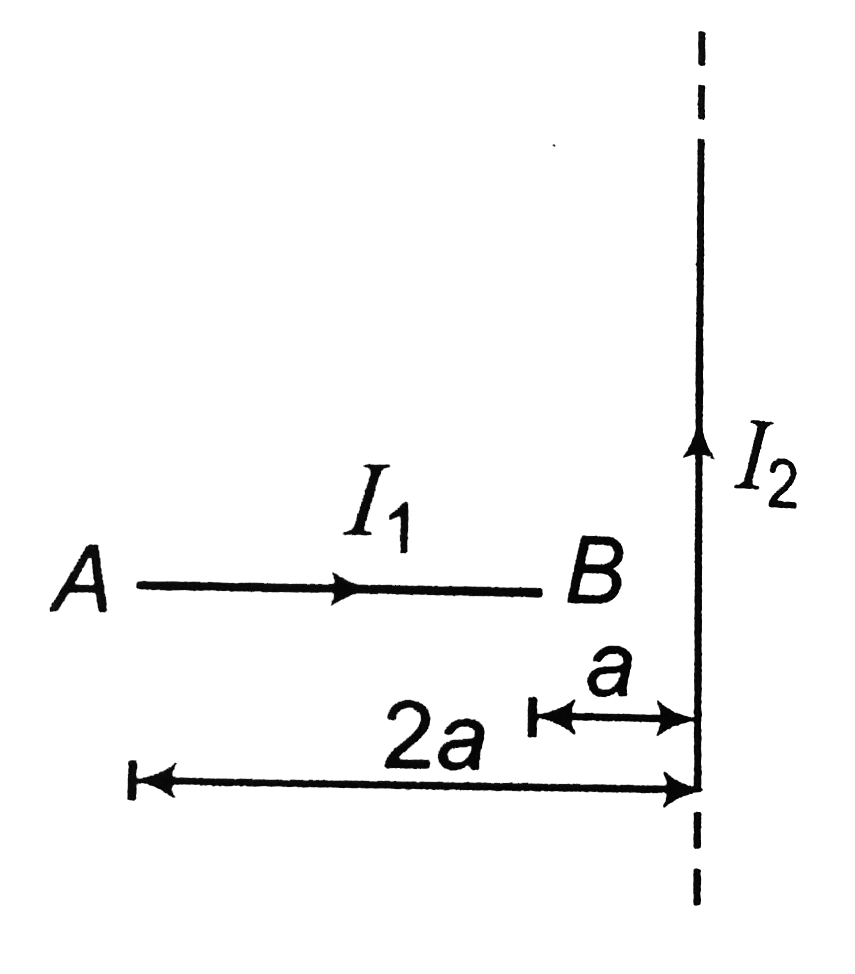A flat , rectangular coil, carrying current, is placed beside a long straight conductor carrying current. The two are coplanar. The net force and net torque experienced by the coil are F and τ .
F=0,τ=0
F≠0,τ=0
F≠0,τ≠0
F=0,τ≠0
The correct Answer is:B
To solve the problem, we need to analyze the forces and torques acting on the rectangular coil due to the long straight conductor carrying current. Here's a step-by-step breakdown of the solution:
Step 1: Identify the Configuration
We have a flat rectangular coil placed beside a long straight conductor, and both are carrying current. The currents in the coil and the conductor can either be in the same direction or in opposite directions.
Hint: Visualize the arrangement of the coil and the conductor, and note the direction of the currents.
Step 2: Analyze the Forces on the Coil
The coil has four sides: AB, BC, CD, and DA. The forces acting on each side due to the magnetic field created by the long straight conductor need to be considered.
- For sides BC and DA: The currents are in opposite directions. According to the right-hand rule, these sides will experience forces that repel each other. Thus, the forces on these sides will be equal in magnitude but opposite in direction, resulting in no net force or torque from these sides.
- For sides AB and CD: The currents are in the same direction as the current in the long straight conductor. According to the right-hand rule, these sides will experience attractive forces towards the conductor.
Hint: Remember that parallel currents attract each other while anti-parallel currents repel each other.
Step 3: Calculate the Net Force
Let’s denote the attractive forces acting on sides AB and CD as F1 and F2 respectively. Since both sides experience attractive forces towards the conductor, the net force F on the coil will be the sum of these two forces:
F=F1+F2
Hint: Consider the magnitudes of the forces based on the current and the distance from the conductor.
Step 4: Analyze the Torque
Torque (τ) is produced when there is a couple of forces that are equal in magnitude but opposite in direction and not along the same line.
- In this case, since the forces on sides BC and DA are equal and opposite but act along the same line, they do not create a torque.
- Similarly, the attractive forces on sides AB and CD do not create a torque because they act along the same line as well.
Thus, the net torque τ experienced by the coil is:
τ=0
Hint: Recall that torque is related to the perpendicular distance from the line of action of the force to the pivot point.
Final Result
In conclusion, the rectangular coil experiences:
- A net force F that is not equal to zero (due to the attractive forces on sides AB and CD).
- A net torque τ that is equal to zero (since there are no couples of forces producing a torque).
Summary
- Net Force F: Not equal to zero (resulting from attractive forces).
- Net Torque τ: Equal to zero (no effective torque-producing forces).
We have a flat rectangular coil placed beside a long straight conductor, and both are carrying current. The currents in the coil and the conductor can either be in the same direction or in opposite directions.
The coil has four sides: AB, BC, CD, and DA. The forces acting on each side due to the magnetic field created by the long straight conductor need to be considered.
Let’s denote the attractive forces acting on sides AB and CD as F1 and F2 respectively. Since both sides experience attractive forces towards the conductor, the net force F on the coil will be the sum of these two forces:
Torque (τ) is produced when there is a couple of forces that are equal in magnitude but opposite in direction and not along the same line.
- Similarly, the attractive forces on sides AB and CD do not create a torque because they act along the same line as well.
In conclusion, the rectangular coil experiences:
- A net force F that is not equal to zero (due to the attractive forces on sides AB and CD).
- A net torque τ that is equal to zero (since there are no couples of forces producing a torque).
- Net Force F: Not equal to zero (resulting from attractive forces).
- Net Torque τ: Equal to zero (no effective torque-producing forces).
Topper's Solved these Questions
- BOOK - AAKASH SERIESCHAPTER - MOVING CHARGES AND MAGNETISMEXERCISE - EXERCISE-IB71videos
MOVING CHARGES AND MAGNETISM
- BOOK - AAKASH SERIESCHAPTER - MOVING CHARGES AND MAGNETISMEXERCISE - EXERCISE-II79videos
MOVING CHARGES AND MAGNETISM
- BOOK - AAKASH SERIESCHAPTER - MOVING CHARGES AND MAGNETISMEXERCISE - EXERCISE-III49videos
MOVING CHARGES AND MAGNETISM
- BOOK - AAKASH SERIESCHAPTER - MOTION IN A STRAIGHT LINE EXERCISE - very Short answer type question15videos
MOTION IN A STRAIGHT LINE
- BOOK - AAKASH SERIESCHAPTER - NUCLEAR PHYSICSEXERCISE - ADDITIONAL PRACTICE PRACTICE SHEET (ADVANCED) Integer Type Questions3videos
NUCLEAR PHYSICS
Similar Questions
A circular coil carrying current behaves as a
View SolutionMagnetic lines of force due to a straight conductor carrying current are
View SolutionA coil carrying current behaves like a magnet.
View SolutionA square loop ABCD , carrying a current I, is placed near and coplanar with a long straight conductor XY carrying a current I.
 View Solution
View SolutionA conductor AB of length l carrying current i is placed perpendicular to a long straight conductor carrying a current I as shown. Force on AB will be
 View Solution
View SolutionA conductor PQ, carrying a current i is placed perpendicular to a long conductor xy carrying a current i. The direction of force on PQ will be
 View Solution
View SolutionA square loop ABCD, carrying a current I2 is placed near and coplanar with a long straight conductor XY, carrying a current I1 as shwon in Figure. The net force on the loop will be
 View Solution
View SolutionA rod CD of length b carrying a current l, is placed in a magnetic field due to a thin log wire AB carrying currrent I as shown in fig. Then find the net force experienced by the wire
View SolutionA coil carrying electric current is placed in uniform magnetic field
View SolutionA segment AB of wire carrying current I1 is placed perpendicular to a long straight wire carrying current I2 as shown in figure. The magnitude of force experieced by the straight wire AB is
 View Solution
View Solution

